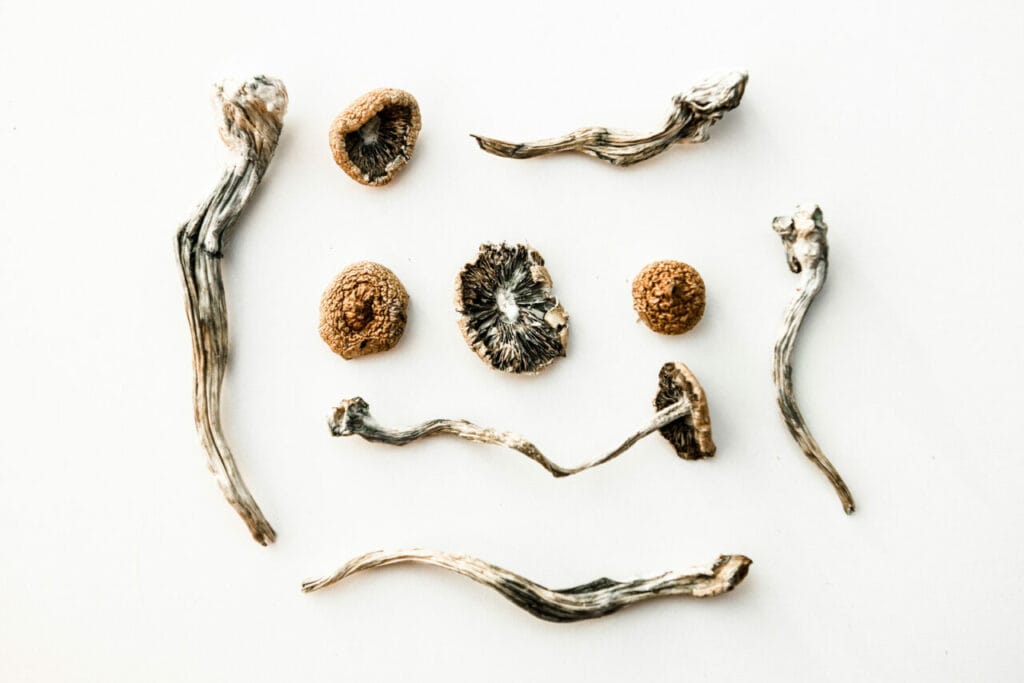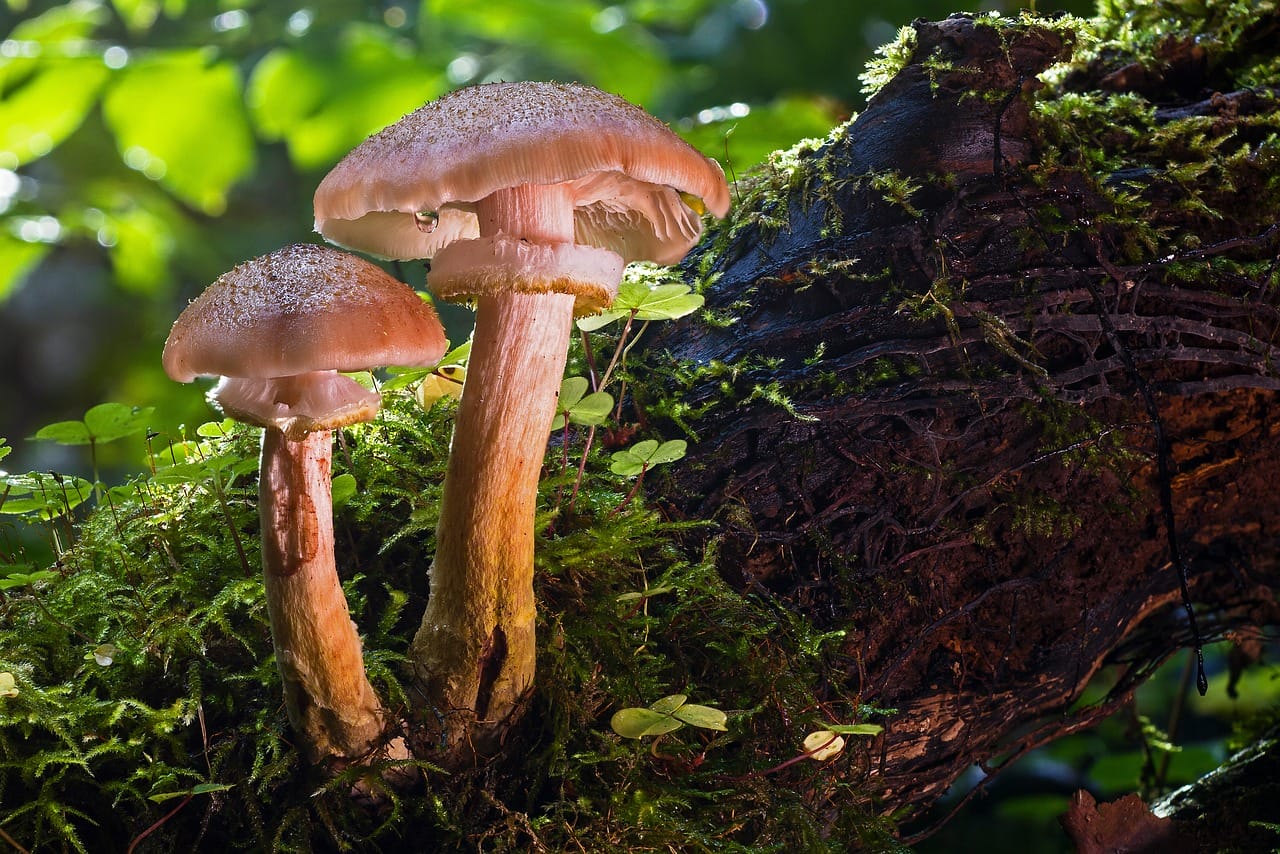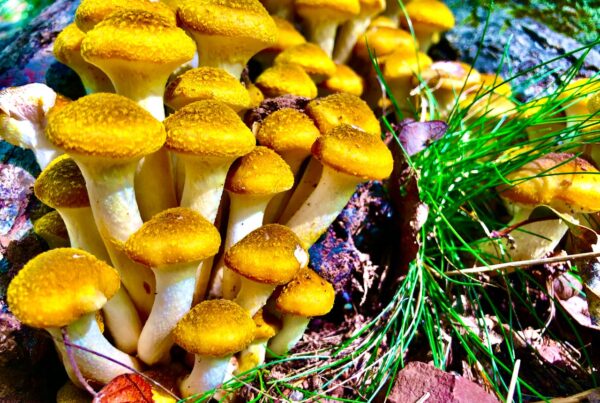Most Canadians view magic mushrooms as a psychedelic substance used primarily for recreational purposes. When researchers began studying the active compound psilocybin, they were surprised to find it highly effective as a treatment for various mental health conditions.
As more information emerges, people better understand psilocybin’s uses. The more people know, the easier they can access these products through magic mushroom delivery services. One recent study shows its involvement in human consciousness. Could this be why it has a significant impact on the human brain? Let’s learn more about this fascinating discovery of magic mushroom products.
Table of Contents
Key Takeaways:
- The psychedelic magic mushroom influenced the cognitive function of pre-historic people to help them survive.
- Mushroom’s significance in neurological health is noteworthy because of its ability to treat PTSD, depression, and anxiety.
- Psilocybin’s effects on consciousness and brain function may have boosted creativity, introspection, and abstract thinking.

Taking Magic Mushrooms: Historical Accounts and Significance
According to historical accounts, our ancestors have been using psychedelic magic mushrooms from ancient times. Indigenous groups used them for spiritual ceremonies and traditional rituals to honour their gods. They grow across the globe, with some present in subtropical and tropical regions, including South and Central America, the Caribbean, Southeast Asia, and Africa.
Shroom’s History in Civilizations
Mexico’s Indigenous people have used these fungi for visions, spiritual communication, and religious rituals since ancient times. “God’s Flesh,” as what South American Aztec Indians call it, was also used in healing ceremonies.
Archaeological evidence suggests the use from about:
- 10,000 years ago in Australia
- 7,000 years ago in North Africa
- 6,000 years ago in Spain.
Some academics present these as evidence of widespread historic psilocybin mushroom consumption. Academics described these people running blissfully, surrounded by their hallucinations’ geometric and visual structures.
Shroom’s History in Spain’s Bronze Age
In the mid-’90s, researchers discovered some remains, specifically hairs of about 200 Bronze Age civilizations, in a sealed cave in Minorca, Spain. The artifacts were well-preserved due to the cave’s collapsed rubble opening. Researchers have determined that hairs contain traces of three alkaloid substances known to influence one’s mind and result in altered states of consciousness.
These accounts provide crystal clear explanations of why and how ancient people had to use these substances. Well, what do you know? Being high was actually valid back in the day, but how in the world would these cubes affect development?
The “Big Bang Theory” of Human Evolution and Psilocybin
Recent years have seen a revival of psychedelic research by keeping alive the theory that psychedelics stimulated consciousness. This hypothesis is called the stoned ape theory, which ethnobotanist Terence McKenna proposed. The theory argues that psychedelic consumption may have influenced the mind and cultural development.
Dr. Thomas Falk, a professor of Philosophy and Education at the University of Dayton, noted that the theory may have provided an explanation for the so-called “creative explosion” from 40,000 years ago in Homo sapiens. It was the time that we saw a big leap in early human cognitive ability.
Through psychedelics, these early humans lived in worlds of their own creations. Eventually, with their cognitive ability, they were able to re-create them in their physical environments.
Terence McKenna’s “Food of the Gods” formulated his arguments that the stoned ape hypothesis is from ancient shamanistic traditions and a hypothetical range of plants and fungi.
“Potential to Trigger Neurological and Psychological Effects”
The psychoactive substances have the potential to induce profound neurological and psychological changes. These aspects could have significantly impacted the development of our species.
Drawing on a multidisciplinary approach encompassing biology, ethnobotany, and neuroscience, the study examines existing research on psilocybin and human consciousness. Researchers theorize that as early humans transitioned from forested to grassland environments, increased exposure to animal dung led to greater consumption of fungi. This dietary shift, according to the “stoned ape” hypothesis cited in the study, may have catalyzed significant alterations in hominid brains.
Effects of Consuming Psychoactive Substances
Potential effects of consuming these fungi include enhanced hunting and foraging abilities, increased sexual drive, and heightened sensory perception. These factors, combined with psilocybin’s influence on consciousness and brain function, could have fostered creativity, introspection, and abstract thinking, ultimately contributing to the development of language.
The study, conducted by researchers from Peru, highlights the need for further exploration of the impact on both the brain and human evolution. While it has affected brain regions associated with memory, decision-making, and introspection, its evolutionary implications remain a subject of ongoing investigation.
A separate genetic study indicates that shrooms originated approximately 67 million years ago. Human consumption of these fungi began millions of years ago, predating the use of marijuana by thousands of years.
What’s Inside Dried Magic Mushrooms?
Dried Magic Mushrooms contain a hallucinogenic chemical called psilocybin. The effects depend on your tolerance, body composition, and consumption method. These are some of the expected impacts:
- Euphoria
- Peacefulness
- Spiritual awakening and introspection
- Dream-like sense of being disconnected from the physical environment
- Visual manipulation, such as seeing halos of light and vivid colours
- Enhance well-being
While people use it as a recreational tool, many employ it for its medical benefits, specifically its benefits in brain health.
Effects on Neurological Heath
The active compound modifies mood, perception, and cognition by targeting serotonin receptors in the prefrontal cortex. One’s enhanced cognitive functions, which include visual and auditory manipulation, elevate how one does something.
In Connection with the Past
Researchers can apply the same principle to our ancestors, particularly the stoned apes. Their encounter and use of psilocybin mushrooms may have subsequently influenced their consciousness and cognitive functions. It provided some clarity on where they learned basic life survival skills.
Present and Future Relationship
In recent research, people with cluster headaches, anxiety, anorexia, obsessive-compulsive disorder, PTSD, and depression have low serotonin levels. The known treatment for this involves selective serotonin reuptake inhibitors (SSRIs), but it takes a lot of time for an improvement to occur. Shrooms can cause immediate brain neuron connectivity changes.
Psychedelic Research Today – Clinical Trials
Since the early 2000s, scientists have explored innovative treatments for a range of psychiatric and behavioural disorders tailored to individual patient needs.
Since it penetrates the central nervous system and helps cognitive function, experts have found it effective in therapy. Recent research advancement in 2020 shows that psychedelic therapy with psilocybin products relieves major depression.
According to Matthew Johnson, a professor at Johns Hopkins Medicine, these substances alter how different brain systems synchronize. There’s an observable increase in connectivity between brain regions that don’t communicate effectively. Regions that interact frequently show reduced communication.
This induced disorganization is not merely a side effect but has therapeutic potential. Depressed individuals become trapped in cycles of self-critical, repetitive thoughts, which can fuel their condition. Psychedelics disrupt these patterns to make it easier for individuals to see beyond their entrenched negativity during a psychedelic experience. This leads to more flexible thinking and an ability to control critical thoughts.
Buy Magic Mushrooms Online: Your Choice for Your Healing Journey
There are plenty of options for these controlled substances available online. You can choose from a selection that is safe and lab-tested, so you don’t have to worry about accidentally buying poisonous mushrooms. Reputable sellers ensure the quality and safety of the products they offer.
| Product | Psilocybin Content | Psilocin Content | Benefits |
| Enigma | 0.76% | 0.07% | Elevate ConcentrationUplifting Effects |
| Atlantic Treasure Coast | 0.59% | 0.08% | Increased FocusBoost CreativityNeuroplasticity |
| Blue Magnolia | 0.58% | 0.08% | Boosts MemoryTreat Depression and Anxiety |
| Cambodian | 0.45% | 0.06% | Treat PTSD and AnxietyTreat Substance AbuseImprove Mood |
Little Did We Know, Magical Mushroom Upgraded Our Game
All of these developments have led us to what we are and what we have today, including civilizations, urbanizations, and societies. Although the stoned-ape hypothesis may just be a theoretical discussion between two people, scientific researchers are gradually making discoveries that may provide evidence that psilocybin really levelled up our species.
If you want fast-paced cognitive development, then hurry to Zoomies Canada’s magic mushroom delivery. We offer a range of good quality shrooms from A to Z with an option of express shipping in British Columbia and beyond.
Discover the future of personal growth—shop premium psychedelics online Canada today.
Frequently Asked Questions
What type of shrooms did ancient civilizations use?
There are various types of fungi found worldwide, so no single type is used by all groups of people. Some prefer the well-known liberty caps, while others enjoy Psilocybe cubensis. Rather than consuming dried mushrooms, they eat them raw or prepare shroom edibles like tea concoctions.
How are psychedelics contributing to human development today?
Psychedelics prove to work today by primarily activating the 5-HT2A receptor subtype. This action has proven effective in treating stress-related conditions and significantly impacts creativity and social behaviour. These effects could enhance adaptability and fitness, especially in societies that rely heavily on knowledge and social interdependence.
Did spiritual practices involving shrooms contribute to human development?
Yes, spiritual practices contribute to human development by shaping cultural, religious, and social structures. It fosters a deeper sense of connection, creativity, and communal bonding.
Related Articles:





